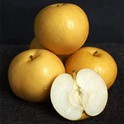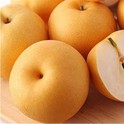Hey there, fellow fruit enthusiasts! I'm a supplier of Yellow Pears, and I've been getting a lot of questions lately about whether these lovely fruits need pollination to grow. So, I thought I'd dive into this topic and share some insights with you.
First things first, let's talk about what pollination is. Pollination is the process by which pollen is transferred from the male part of a flower (the anther) to the female part (the stigma). This is crucial for the fertilization of the flower, which then leads to the development of fruit. In nature, pollination can happen through various means, such as wind, water, or animals like bees and butterflies.
Now, back to our Yellow Pears. The short answer is yes, Yellow Pears generally need pollination to grow. Most pear varieties, including Yellow Pears, are self - unfruitful, which means they can't pollinate themselves effectively. They rely on cross - pollination, where pollen from a different pear variety is transferred to their flowers.
There are a few reasons why cross - pollination is so important for Yellow Pears. For starters, it helps to increase the genetic diversity of the fruit. When different pear varieties cross - pollinate, the resulting fruits can have better flavor, texture, and disease resistance. It also leads to a higher fruit set, which means more pears on the tree.


So, what are some good pollinators for Yellow Pears? Well, there are several great options out there. One of them is the Golden Delicious Pear. This variety is known for its sweet and juicy fruit, and it makes an excellent pollinator for Yellow Pears. Another option is the Ornamental Pear. While it's often grown for its beautiful flowers, it can also play a role in pollinating Yellow Pears. And let's not forget about the Honey Sweet Pear. As the name suggests, it's incredibly sweet, and it can be a great partner for Yellow Pears in the pollination process.
When it comes to pollination in commercial orchards, we suppliers have to be really strategic. We need to make sure that there are enough pollinator trees planted among the Yellow Pear trees. Usually, we aim for a ratio of about one pollinator tree for every four to six Yellow Pear trees. This ensures that there's enough pollen available for successful cross - pollination.
Bees are our best friends when it comes to pollination. They're natural pollinators, and they do an amazing job of transferring pollen from one flower to another. In our orchards, we often bring in beehives during the flowering season to boost the pollination process. The bees flit from flower to flower, collecting nectar and inadvertently spreading pollen along the way.
But what if you're growing Yellow Pears in your backyard? Well, the same principles apply. You'll want to plant a pollinator variety nearby if you want a good harvest. And if you don't have room for another full - sized tree, you could consider grafting a branch from a pollinator variety onto your Yellow Pear tree. This is a bit more advanced, but it can work really well.
It's also important to note that the timing of pollination is crucial. Pear trees usually bloom in the spring, and the flowers are only receptive to pollen for a short period of time. So, we have to keep a close eye on the weather and the development of the flowers to make sure that pollination happens at the right time. If the weather is too cold, wet, or windy during the flowering period, it can disrupt the pollination process and lead to a poor fruit set.
As a Yellow Pear supplier, I've seen firsthand the impact that proper pollination can have on the quality and quantity of our harvest. When the pollination is successful, we get beautiful, juicy, and flavorful Yellow Pears that our customers love. And that's what it's all about, right?
If you're a grocery store owner, a restaurant chef, or just someone who loves fresh fruit and wants to stock up on high - quality Yellow Pears, I'd love to talk to you. Whether you're looking for a small batch for your home kitchen or a large order for your business, I can provide you with the freshest Yellow Pears around. Just reach out, and we can start discussing your needs and how I can meet them.
In conclusion, pollination is a vital part of the growth process for Yellow Pears. By understanding the importance of cross - pollination and taking the right steps to ensure it happens, we can enjoy a bountiful harvest of these delicious fruits. So, the next time you bite into a juicy Yellow Pear, take a moment to appreciate all the hard work that goes into making it possible, from the bees' pollination efforts to the careful cultivation in the orchard.
If you have any more questions about Yellow Pears or pollination, feel free to leave a comment below. I'm always happy to share my knowledge and experiences with you.
References
- "The Fruit Grower's Handbook" by Michael Phillips
- "Pear Culture in North America" by Ulysses Prentiss Hedrick





